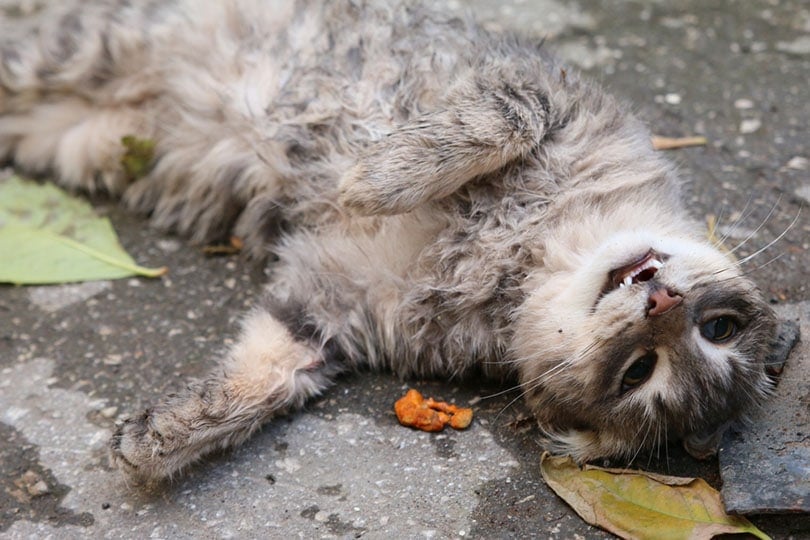
Cats are known for their curious nature and unique preferences, often baffling their human companions. One such peculiarity is their apparent fondness for concrete surfaces. From sprawling on sidewalks to kneading on driveways, cats seem to gravitate towards these seemingly unappealing materials. This article delves into the reasons behind this feline fascination, exploring the various factors that contribute to cats’ love affair with concrete.
We’ll examine how concrete’s properties cater to their natural instincts and needs, covering aspects like temperature regulation, texture stimulation, hiding opportunities, and a sense of security. By understanding these motivations, we can gain a deeper appreciation for our feline friends’ peculiar choices.
Why Cats Like Concrete Surfaces
Concrete surfaces offer a unique combination of characteristics that appeal to cats on multiple levels. While it might seem strange to us, concrete provides several benefits that cater to their instincts and preferences.
Temperature Regulation
Cats are highly sensitive to temperature fluctuations and often seek out cool surfaces during warm weather. Concrete, being a dense material with high thermal mass, absorbs heat slowly and retains it less effectively than other materials like wood or asphalt. This means concrete surfaces tend to stay cooler, providing a welcome respite for cats on scorching days.
A cat sprawled on a cool concrete patio is likely enjoying the relief from the sun’s heat. They may even seek out shaded areas with concrete surfaces to maximize their cooling effect.
Texture and Stimulation
Cats have sensitive paws and enjoy exploring different textures. Concrete offers a rough, uneven surface that provides tactile stimulation. They often knead on concrete with their paws, a behavior rooted in kittenhood when they kneaded their mother’s belly to stimulate milk flow. This kneading action helps them mark their territory and release endorphins, leaving them feeling relaxed and content.
The texture of concrete also allows for scratching, which is essential for cats to maintain healthy claws and stretch their muscles. They may rub their bodies against concrete walls or surfaces, further engaging with the texture and marking their presence.
Hiding and Observation
Concrete structures often provide opportunities for hiding and observation. Cats are naturally curious and enjoy exploring their surroundings from a safe vantage point. A small gap between concrete blocks, a shaded corner under a porch, or even a raised planter box can become a perfect hideaway for a cat to observe the world around them without feeling exposed.
This sense of security allows them to relax and feel more comfortable in their environment.
Security and Stability
Concrete’s solid structure provides a sense of security and stability that some cats find comforting. They may prefer sleeping or resting on concrete surfaces because they feel protected and grounded. The weight and density of concrete offer a reassuring feeling, especially for cats who are naturally cautious or anxious.
This preference for solidity can be observed in their choice of sleeping spots – a sturdy concrete patio might be more appealing than a soft bed if the cat seeks a sense of security.
Conclusion
Cats’ apparent fondness for concrete surfaces stems from a combination of factors that cater to their natural instincts and needs. From temperature regulation and texture stimulation to hiding opportunities and a sense of security, concrete offers a unique set of benefits that appeal to our feline companions. Understanding these motivations allows us to better appreciate their peculiar choices and create environments that meet their diverse needs.
